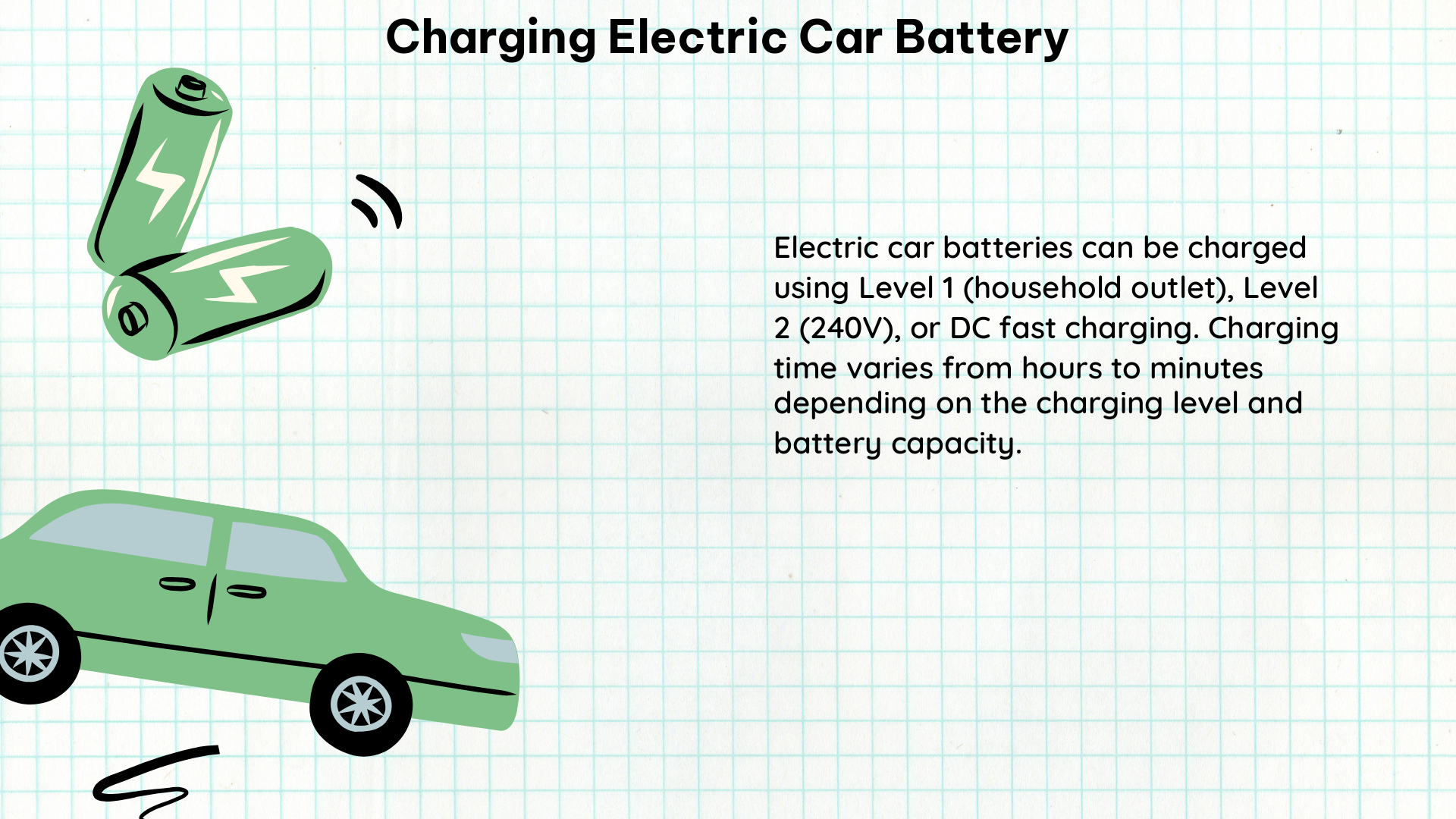Charging an electric car battery is a crucial aspect of owning and operating an electric vehicle (EV). This comprehensive guide delves into the technical details and quantifiable data points that are essential to understand when it comes to charging your EV’s battery.
Battery Capacity and State of Charge
The capacity of an electric vehicle (EV) battery is typically measured in kilowatt-hours (kWh), which indicates the amount of energy that can be stored in the battery. The average battery capacity for modern EVs ranges from 24 kWh for compact models to 100 kWh or more for high-end, long-range vehicles.
The state of charge (SoC) is another essential metric that represents the current battery level as a percentage of its total capacity. The SoC can be monitored through the vehicle’s dashboard or infotainment system, allowing the driver to keep track of the battery’s remaining charge.
| Battery Capacity | Typical Range |
|---|---|
| 24 kWh | 100-150 miles |
| 40 kWh | 150-250 miles |
| 60 kWh | 200-300 miles |
| 100 kWh | 300-400 miles |
Charging Power and Time

When it comes to charging an EV battery, the charging power and time are significant factors. Charging power is usually measured in kilowatts (kW) and indicates how quickly the battery can be charged. The charging time depends on the battery capacity and the charging power.
For instance, a 40 kWh battery charged at 7 kW would take approximately six hours to reach full charge. However, higher-powered charging stations, such as Level 2 (240V) or DC fast chargers, can significantly reduce the charging time. A 150 kW DC fast charger can charge a 60 kWh battery from 20% to 80% in as little as 15 minutes.
| Charging Level | Voltage | Power | Charging Time (40 kWh battery) |
|---|---|---|---|
| Level 1 (AC) | 120V | 1.4 kW | 28 hours |
| Level 2 (AC) | 240V | 7 kW | 6 hours |
| DC Fast Charge | 400V | 50 kW | 45 minutes (20% to 80%) |
Charging Efficiency and Power Loss
The efficiency of the charging process is another critical aspect to consider. The measurement of power loss during electric vehicle charging and discharging is crucial to understand the energy efficiency of the charging system.
Power loss can be quantified in watts (W) or as a percentage of the total energy transferred. Typical power loss during EV charging ranges from 5% to 15%, depending on the charging equipment, battery management system, and environmental factors.
To maximize charging efficiency, it’s essential to ensure that the charging equipment is properly maintained, the electrical connections are secure, and the charging environment is within the recommended temperature range.
Smart Charging Strategies
Smart charging strategies are essential to consider when charging EV batteries. These strategies aim to optimize the charging process by shifting the charging schedule to off-peak hours, reducing the stress on distribution grids, and minimizing electricity costs.
Smart charging can be unidirectional or bidirectional. Unidirectional smart charging allows the EV to be charged from the grid, while bidirectional smart charging enables the EV battery to be used as a distributed energy resource, allowing energy to be returned to the grid.
Implementing smart charging strategies can provide benefits such as:
- Reduced electricity costs by charging during off-peak hours
- Improved grid stability by shifting charging loads to off-peak periods
- Increased utilization of renewable energy sources by aligning charging with renewable energy generation
DIY Charging: Technical Specifications
When it comes to DIY charging, it is essential to consider the technical specifications of the charging equipment. The charging station’s power output, compatibility with the EV’s battery management system, and safety features are all critical factors to consider.
Additionally, the installation process requires attention to electrical wiring, grounding, and permits, depending on local regulations. It’s crucial to ensure that the charging equipment is properly installed and that all safety protocols are followed to avoid potential hazards.
| Charging Station Specifications | Requirement |
|---|---|
| Power Output | Matched to EV battery capacity |
| Compatibility | Verified with EV manufacturer |
| Safety Features | Overcurrent protection, ground fault detection, etc. |
| Electrical Wiring | Properly sized and grounded |
| Permits | Obtained as per local regulations |
Conclusion
Charging an electric car battery involves a deep understanding of technical specifications and quantifiable data points. From battery capacity and state of charge to charging power, efficiency, and smart charging strategies, this comprehensive guide has covered the essential elements to consider when charging your EV’s battery.
Whether you’re a DIY enthusiast or simply looking to optimize your charging experience, this guide provides the necessary information to make informed decisions and ensure a safe and efficient charging process.
References:
– Agile-GISS: Quantifying the Efficiency of Electric Vehicle Charging
– Science Direct: Optimal Charging Strategy for Electric Vehicles
– Greening the Grid: Electric Vehicle Building Blocks Guidebook

The lambdageeks.com Core SME Team is a group of experienced subject matter experts from diverse scientific and technical fields including Physics, Chemistry, Technology,Electronics & Electrical Engineering, Automotive, Mechanical Engineering. Our team collaborates to create high-quality, well-researched articles on a wide range of science and technology topics for the lambdageeks.com website.
All Our Senior SME are having more than 7 Years of experience in the respective fields . They are either Working Industry Professionals or assocaited With different Universities. Refer Our Authors Page to get to know About our Core SMEs.